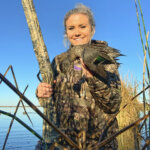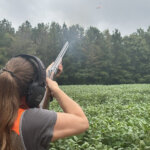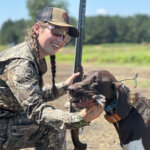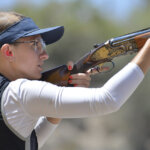September. Just saying it rouses excitement and anticipation for the opening of the hunt season. In Virginia, it welcomes opening day for dove and goose and adds teal later in the month. While it is still hot, regularly reaching the 80s, it’s easy enough to get an early start on the day or enjoy a long sit in the late afternoon.
September also means a reality check for many that may have slacked off a bit on honing their shooting skills and quickly realizing it is now time to head back to the fields and waters. There is still plenty of time to correct any bad habits and perfect your shooting prowess.
Call of the Wild
Early season hunting offers the ability to test your prep work and then adjust, as needed. As you thumb through that freshly printed syllabus, contemplate where you will go and how you will hunt, also think about pertinent practice sessions to dial in your shooting and put more birds in your bag.
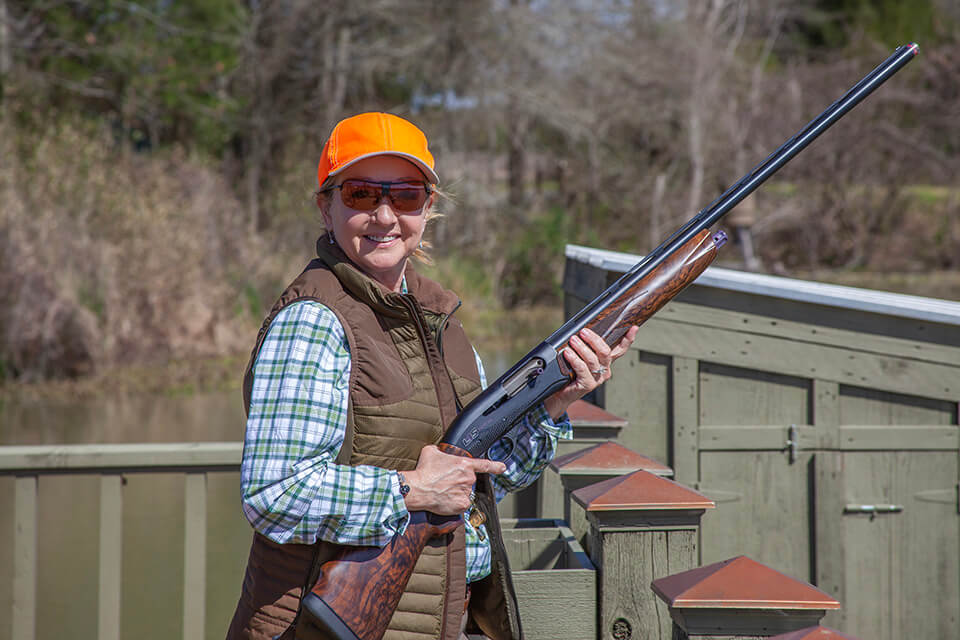
Are you ringing in the new season with high flying grey ghosts (mourning doves)? Find clay presentations that are at distance and turn toward the end of flight. Overhead shots are perfect for dove practice – particularly if they start from behind you!
Will you sit in a strategically placed blind for early season waterfowl? Look for crossing and incoming shots to mimic birds coming to your decoys. Do you prefer to wait until October and hit the high prairies or grouse woods? The flushing away shots will help you for those hunts. Regardless of quarry, have you put in time at the clay course in preparation for the hunt?
One thing I stress constantly with students is that you have spent hours researching and prepping gear and even dogs for the season, but have you put in the time to make sure your efforts are rewarded at the end of the day? For those that travel considerable distances, it doesn’t make sense to drive hundreds of miles to just watch your quarry fly away unscathed while your dog makes “that face” at you for missing, again.
Gauge Your Quarry
First, determine exactly what kind of feathers you are chasing. While the Syren Waterfowler and your favorite 3-inch shells are amazing for those early season honkers, that recipe won’t work for grouse. The Waterfowler has been carefully engineered to handle fast and heavy shells with minimal recoil. Just the weight of the gun, even at only 7 pounds, is more than one would want to walk with for hours in the thick cover in search of woodland birds. It is perfect, though, for sitting in a blind practicing your calls and anxiously awaiting that first flock.
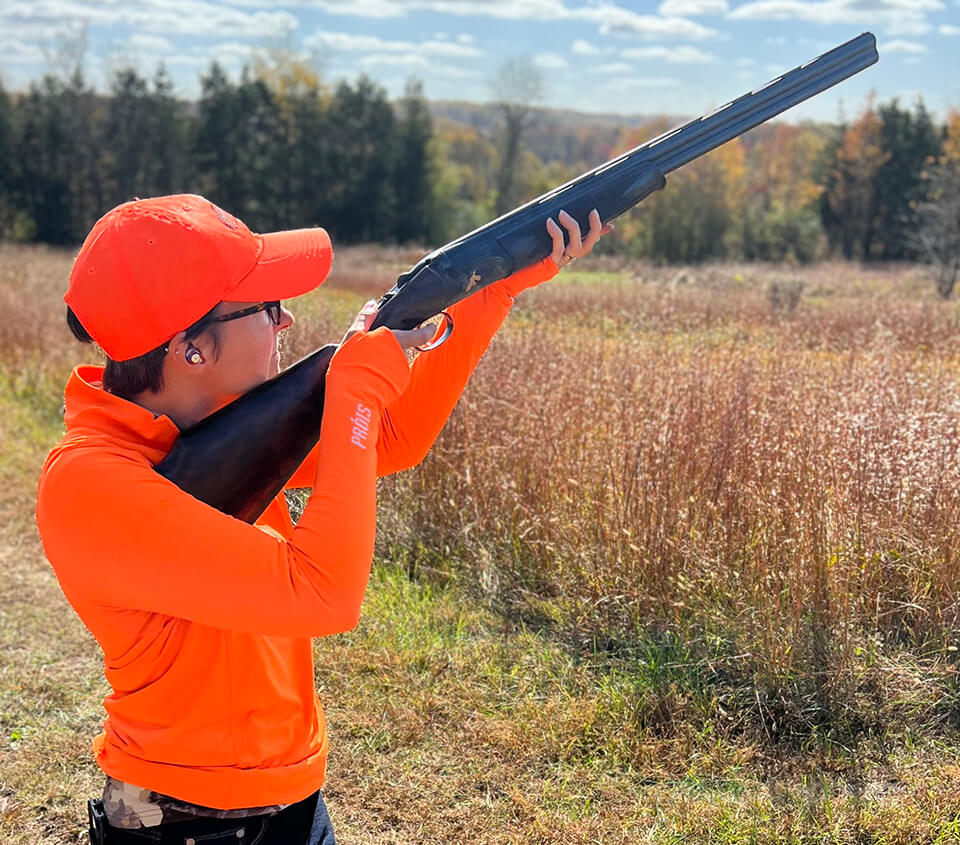
The Waterfowler also is a phenomenal choice for the dove fields. Outfitted with the super smooth Pulse piston, gas system for flawless operation and finished with soft touch Realtree camo, it is the go-to shotgun for women that want a gun that handles the heat of rapid fire while being easy on the shoulder.
A walk in the grouse woods demands more grit and determination from a hunter and dedication to pushing through thick cover. A much lighter and smaller gauge gun – found in the Syren Tempio Light – is just the ticket! Weighing in a smidge over 5 pounds, the Tempio Light allows the hunter to move quickly to fast flushing grouse and woodcock. There is a resurgence in the popularity of 28-gauge shotguns and for good reason. This gauge has long been coveted for its excellent pattern and very little recoil. It doesn’t take much to ethically harvest a grouse or woodcock, but it does take skill and confidence in your shooting and your shotgun.
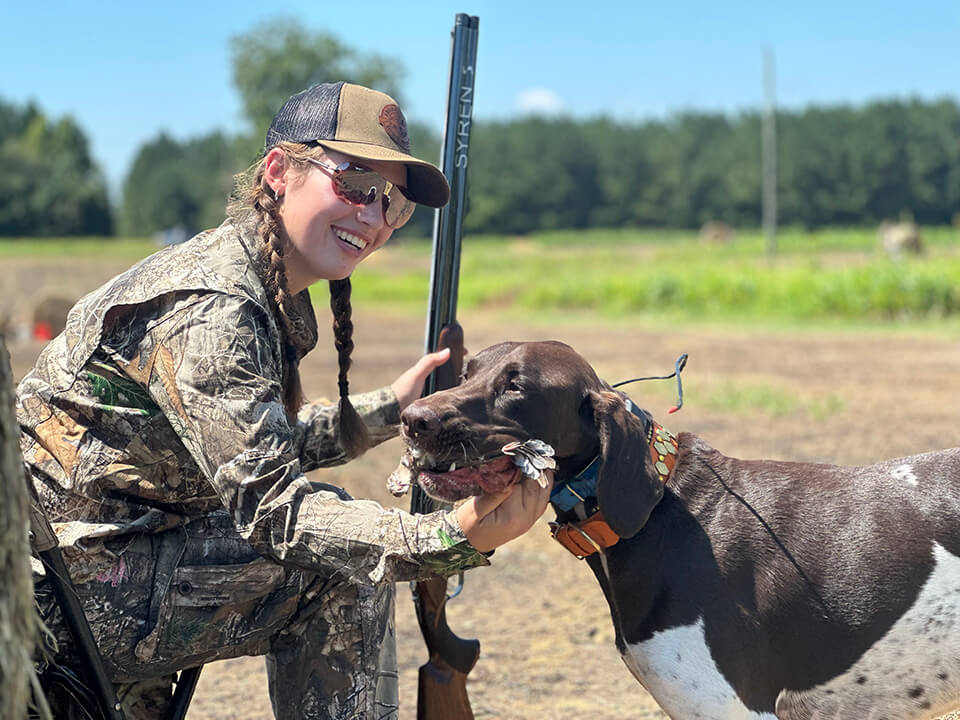
For my favorite passion, long walks across open grass chasing longtails, I always get behind the barrel of the Syren Elos D2 20 gauge. The D2 is a perfect hybrid for the clay course and the hunt field, meaning that it offers a comfortable walk weighing just over 6 pounds, but soft enough to shoot a full round of clays. That great balance equates to lots of practice time before the season starts.
Take a Stand for Change
Once you’ve dialed in where you’ll start your season and what species you are targeting, make certain that season is successful. My phone is full of pics of students on beginner upland hunts. Some of those pics capture crucial moments in time to answer, “Why did I miss?” The answer is always the same: stance and mount. The shooter is upright and uptight instead of slightly forward and their cheek is miles away from the comb. Syren shotguns are designed with a Monte Carlo style stock to accommodate women’s higher cheekbones, making it even easier to engage the stock correctly – if a shooter maintains the correct stance.
The clay course will allow you to practice consistency in your stance and mount. Use the time in the box to perfect both and it will pay dividends in the fields and woods. To practice properly, keep feet shoulder width apart with the toe of off-side foot pointing forward and toe of dominant side foot at roughly 60-degree angle (this promotes mobility in your swing coupled with a stable stance) and the muzzle in your line of sight. The muzzle in your line of sight mimics a hold point, minimizes gun movement and allows the hunter to push cleanly into the target. If your muzzle is too high, it will move wildly out of control causing the barrel to be faster than the bird and drawing your eye off the target. If your muzzle is too low, it’s dangerous since there are dogs underfoot on the hunt and again, the muzzle will be out of control.
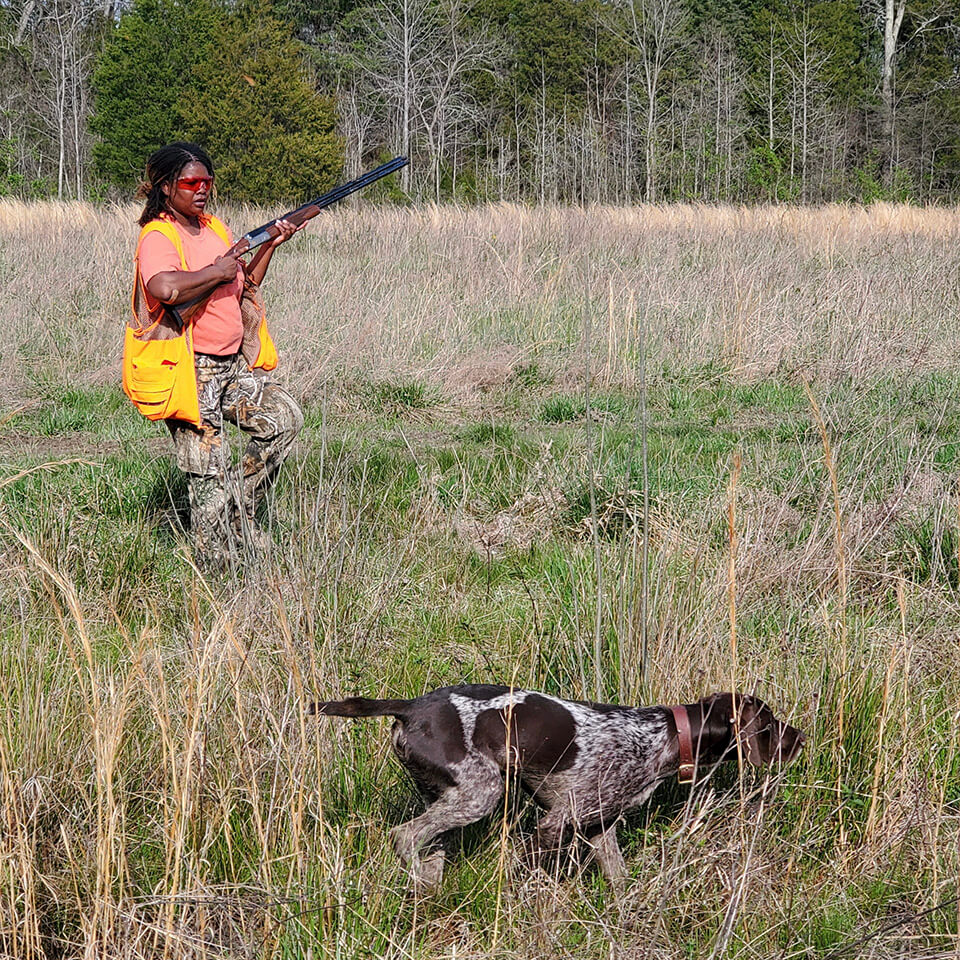
When the clay comes into view, push slightly forward from the hips, softly bringing the gun to the cheek first and shoulder second. This is important as the eyes must continuously track the target and make the alignment down the rib of the gun. Mounting to the shoulder first causes a double mount, loss of crucial time, a muzzle out of control and a frustrated shooter as the sight picture is chaotic all while the target is flying away.
Another important practice is to shoot from a seated position. This is commonly used in dove and waterfowl, so you don’t flare the birds as they fly into a shooter’s area. When practicing, use a dove stool or bucket or even a small bench. While seated, slightly pull back the leg on the dominant side to rest just under you. This makes it easier to rotate from side to side as needed and allows a shooter to smoothly and quickly stand up. Check with course management before trying this practice to make sure it is ok. Most courses are fine with it, provided there is a trapper with you.
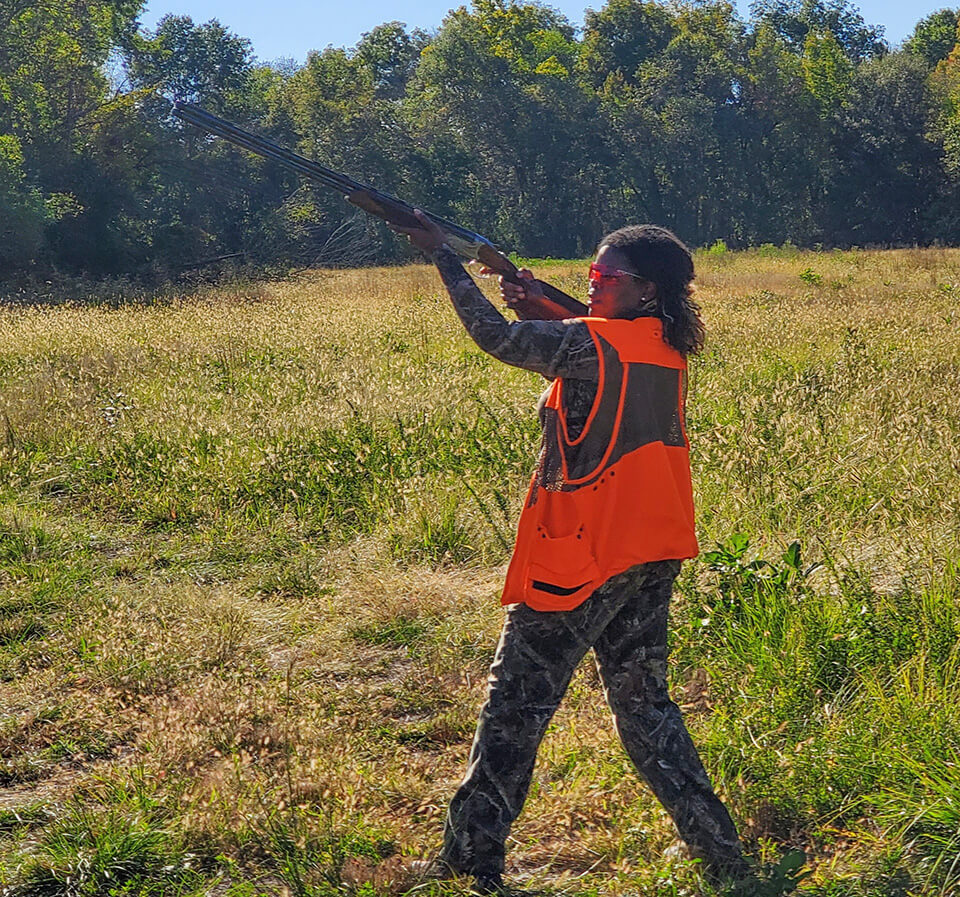
Gear Up
Wear your hunting vest or belt when you practice. This will add confidence in the use of your gear and placement of essential items. You may find that you need to adjust a few straps or even remove a pouch as it impedes your mount, isn’t functional or just seems to always get in the way.
Pattern your shotgun with the choke(s) and exact load that you plan to use for your hunt. This will save you heartache in the field. Unfortunately, I didn’t heed my own advice on a tundra swan hunt years ago and used a backup gun that I had only shot a couple times (not a Syren) and didn’t pattern before the hunt. I drew blood but did NOT drop my bird. To say I was devastated is an understatement.
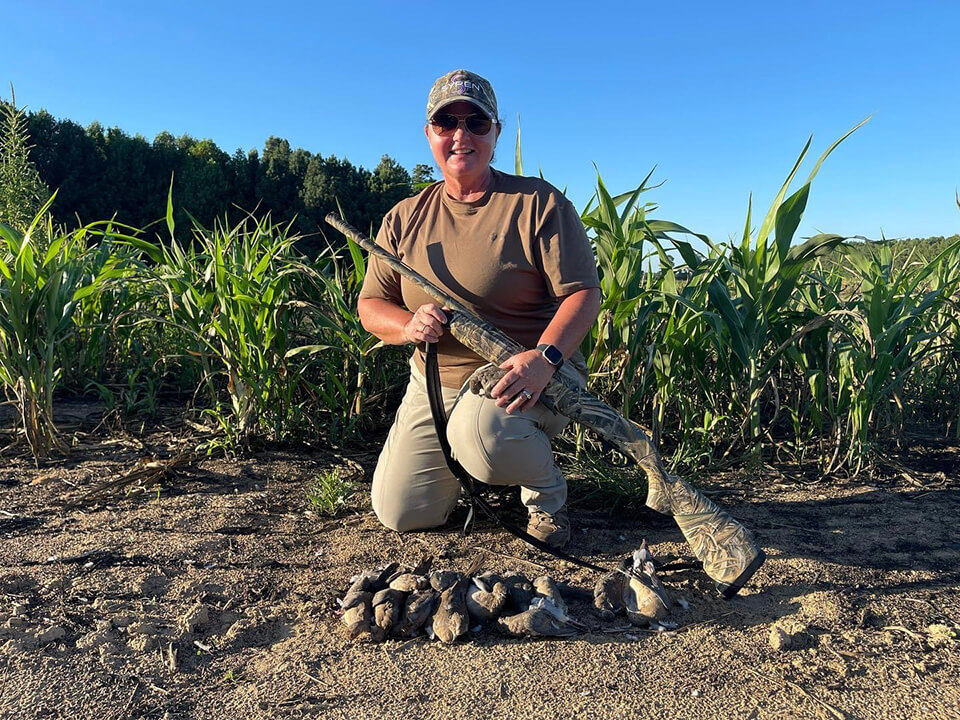
Not every hunt will conclude with that spectacular tailgate pic of freshly harvested feathers against a picturesque sunset. Some hunts will end soaking wet, hungry, exhausted and wondering why you stepped foot in the field that day. That’s OK! There will be some tough days, but there will be far more days filled with success – especially if you practice your shooting, understand best practices for your quarry and spend time with friends and family.
Enjoying this post? Read more just like it on our Syren Savvy Blog HERE.
*This article was originally posted in our column on WomensOutdoorNews.com written by Kate Ahnstrom and edited by WON Publisher/Editor Barbara Baird.


